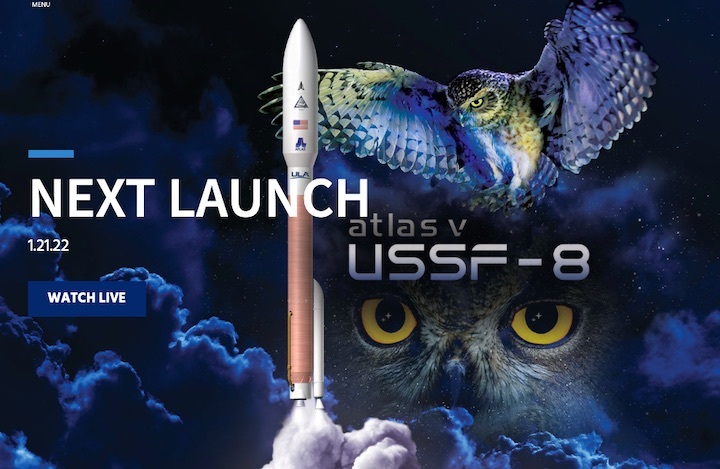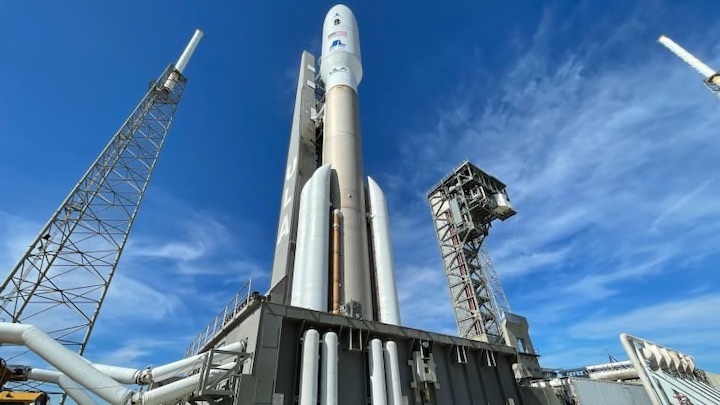CAPE CANAVERAL, Fla. – Crews at Cape Canaveral Space Force Station are planning for a Friday afternoon launch of an Atlas V rocket.
United Launch Alliance says a flight readiness review shows everything is a go for the launch Friday at 2 p.m. from Space Launch Complex 41.
[TRENDING: Student ends up as only passenger on transatlantic flight | Biden to give away 400 million N95 masks | Become a News 6 Insider (it’s free!)]
The rocket will carry two GSSAP satellites for the U.S. Space Systems Command into near geosynchronous Earth orbit.
ULA says the satellites will act like a neighborhood watch to improve flight safety for all spacecraft in that orbit, improving the ability to avoid collisions or near-collisions.
Forecasters say the weather is 60% go for the launch Friday.
It’s the second launch expected this week from the Space Coast. A SpaceX rocket carrying a batch of Starlink satellites launched Tuesday evening from Kennedy Space Center.
Quelle: Orlando.com
----
Update: 21.01.2022
.
It's Launch Day! ULA set for Atlas V liftoff this afternoon from Cape
It's Launch Day!
Here's what you need to know for today's Unlited Launch Alliance Atlas V launch from Cape Canaveral Space Force Station's Launch Complex 41:
• Liftoff is set for 2 p.m. The window will remain open for roughly two hours.
• Weather forecast is 70% "go" at the launch pad.
• Temperature at liftoff should be an ideal 73 degrees with light winds.
• Inside the payload fairing will be two Geosynchronous Space Situational Awareness Program satellites for the Space Force
• These satellites will monitor Earth's orbit for potential satellite collisions.
Quelle: Florida Today
+++
ULA Atlas V rocket rolls to pad, set for Friday launch from Cape Canaveral
A nearly 200-foot Atlas V rocket rolled to its pad at Cape Canaveral Space Force Station on Thursday, setting the stage for liftoff from Launch Complex 41 a little more than 24 hours later.
Just before noon, United Launch Alliance confirmed the rocket's mobile platform secured itself on four "piers" at the pad, marking the end of rollout operations with two Space Force satellites onboard. Liftoff is set for 2 p.m. Friday, the opening of a roughly two-hour window.
Unlike other rockets seen flying from Space Coast pads like SpaceX's Falcon 9, Atlas V is configurable based on mission needs. For this flight known as USSF-8, the rocket is set to the 511 configuration: a five-meter payload fairing, one upper stage engine, and one additional side-mounted solid rocket booster. The SRB – Atlas V can have up to five – is what allows the rocket to leave behind what's popularly known as a "smoke trail."
Space Force weather personnel earlier this week said forecasts would be volatile leading up to the window, but were able to calculate odds at 70% "go." That was a 10% improvement over the previous report.
"A cold front is forecast to approach Friday, though models generally agree that it will remain to the north of the area through the launch window," Space Launch Delta 45 forecasters said Thursday. "The deepest moisture and best convergence along the front is not expected to reach Central Florida until late in the afternoon."
Temperature at liftoff should be an ideal 73 degrees with light winds.
Secured in Atlas V's payload fairing will be two Geosynchronous Space Situational Awareness Program satellites – GSSAP-5 and GSSAP-6 – for the Space Force. Both are designed to sit in Earth's orbit some 22,300 miles away and monitor other spacecraft for potential collisions.
From liftoff to separation, the process is expecting to take a longer-than-usual six hours and 45 minutes.
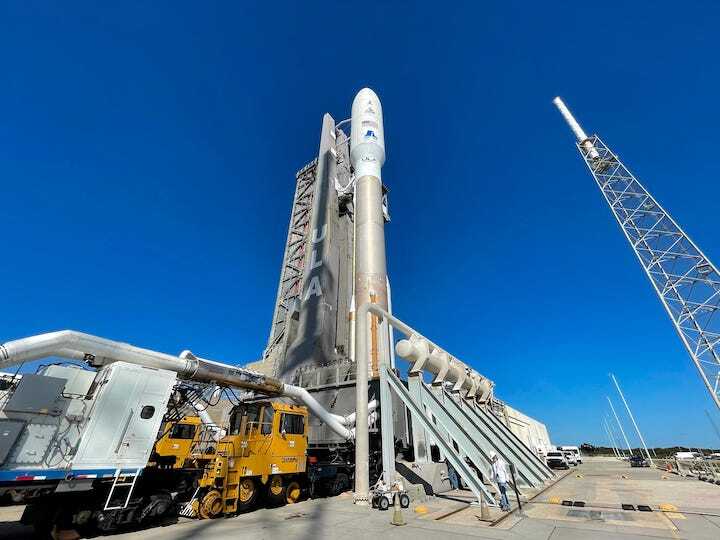
A United Launch Alliance Atlas V rocket is rolled out to its pad at Cape Canaveral Space Force Station's Launch Complex 41 on Tuesday, Jan. 20, 2022. The rocket will take two Space Force satellites to orbit.
Upcoming launches shift
Looking beyond Atlas, NASA officials this week offered updated timelines for some of this year's high-profile missions.
First, the agency is now targeting the middle of February for the rollout of its Space Launch System rocket and aims to complete its first "wet dress rehearsal" test before the end of that month, NASA's Amit Kshatriya told a Wednesday gathering of the Human Exploration and Operations Mission Directorate. This operation will see the 322-foot roll from the Vehicle Assembly Building to pad 39B – its first public appearance in the fully stacked, ready-to-go form.
If all goes well, SLS could launch its Orion capsule on an uncrewed flight around the moon sometime in March, though April is more likely.
Also this week, NASA confirmed private company Axiom's launch to the International Space Station on a SpaceX Crew Dragon capsule is now targeting no earlier than March 31. Axiom purchases seats on the capsule, then designs missions in partnership with SpaceX and to sell seats to customers who can afford the multimillion-dollar rides. The first mission, Ax-1, will include a crew of four led by veteran astronaut Michael Lopez-Alegria.
Launch Friday, Jan. 21
- Rocket: United Launch Alliance Atlas V
- Mission: USSF-8 for the Space Force
- Launch Time: 2 p.m. ET
- Launch Window: To 4 p.m. ET
- Launch Complex: 41 at Cape Canaveral Space Force Station
- Trajectory: East
- Weather: 70% "go"
Quelle: Florida Today
+++
Start von Atlas V 511 rocket mit USSF-8 mission
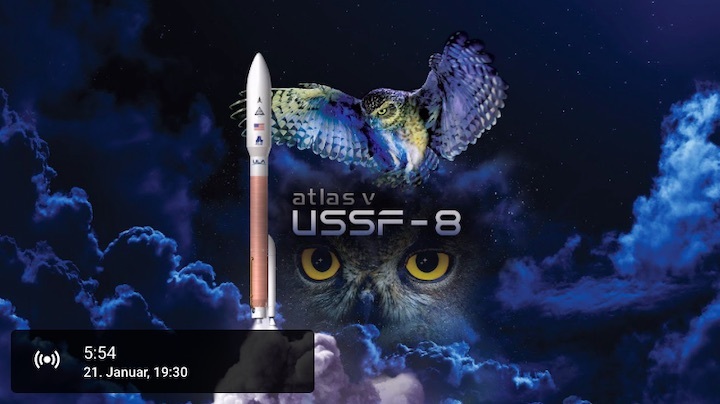

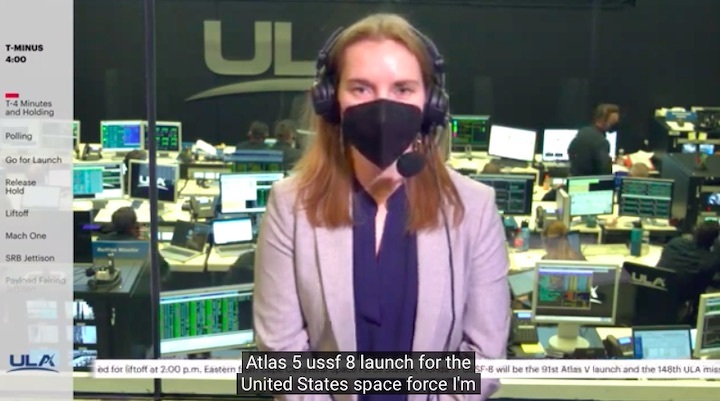
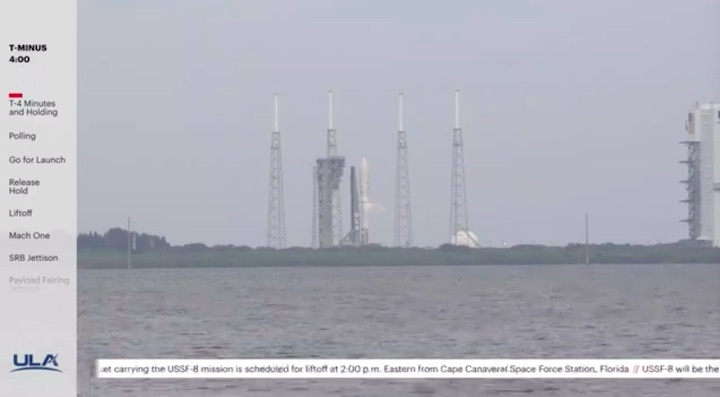
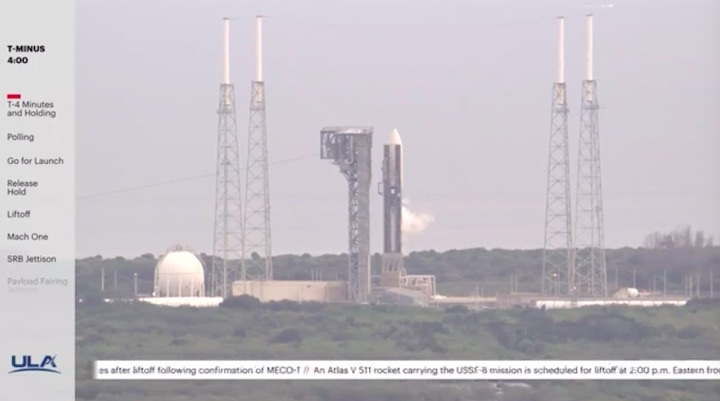
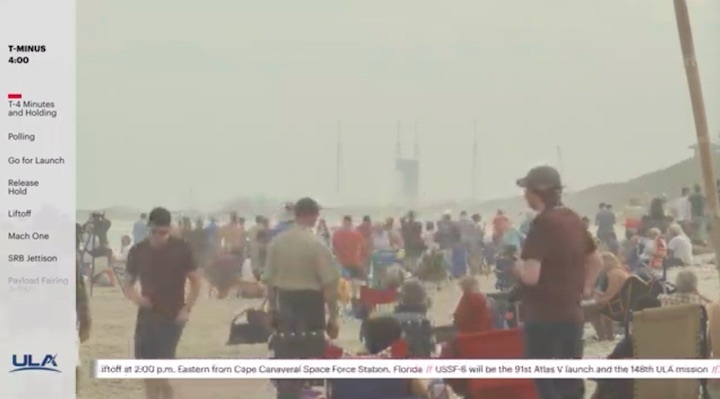

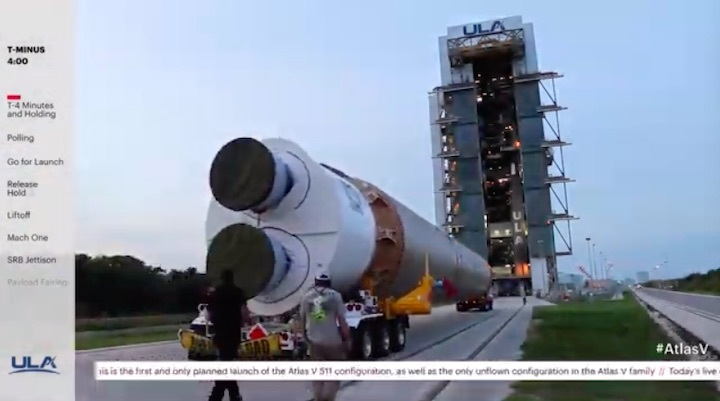
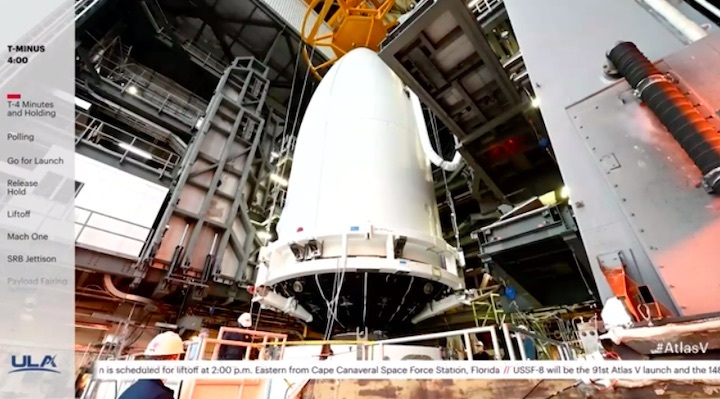
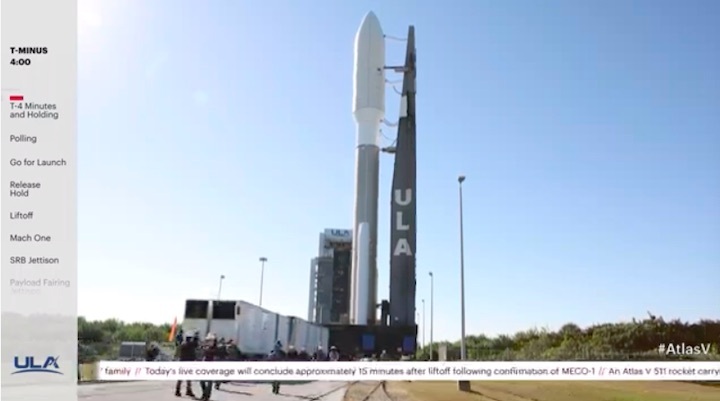
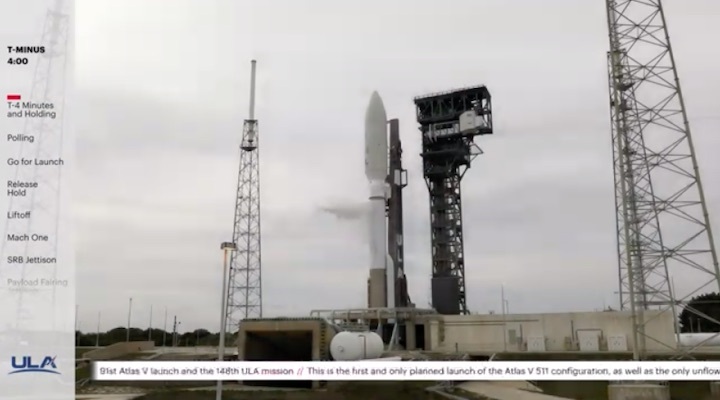
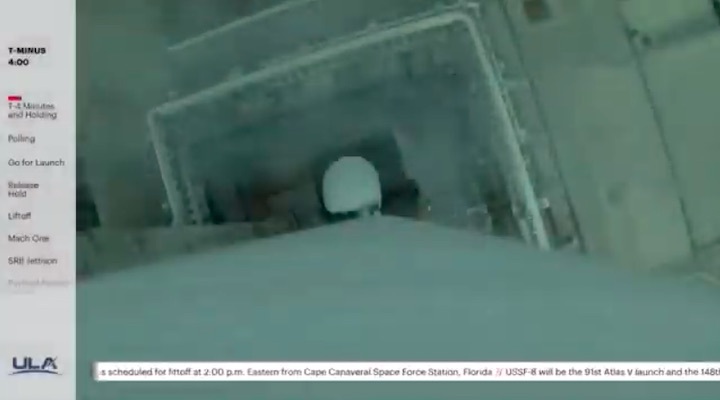

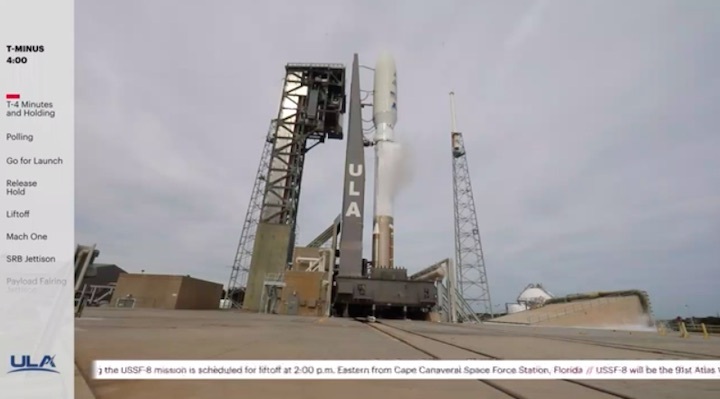

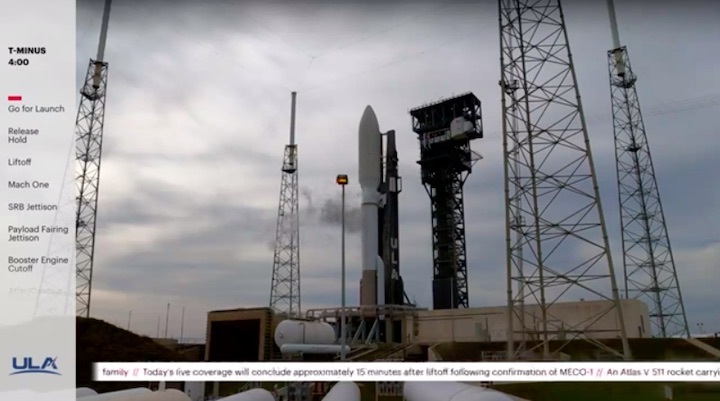
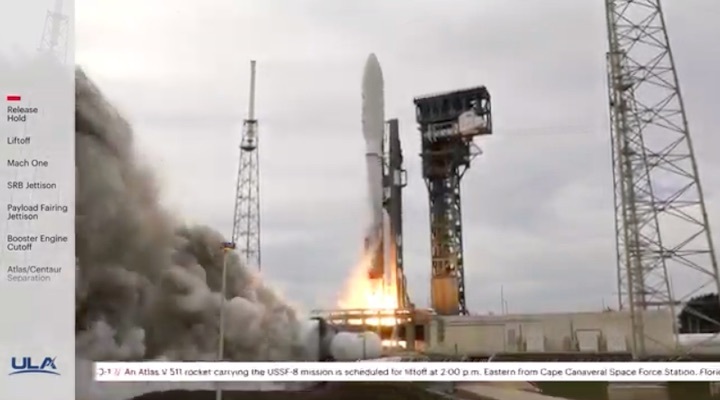
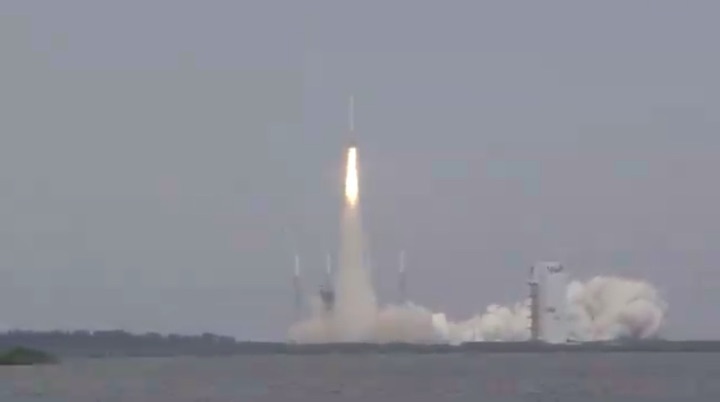
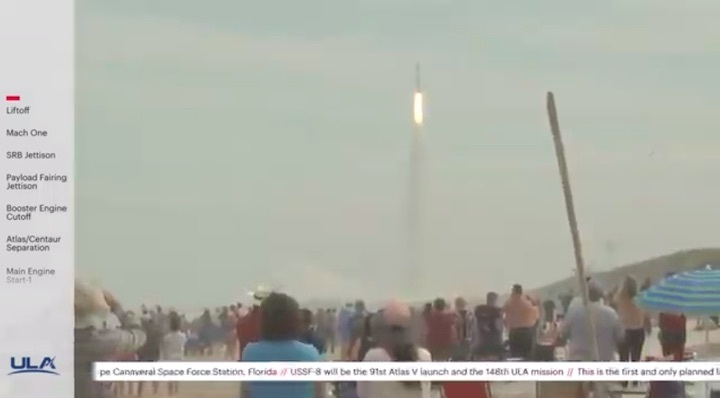

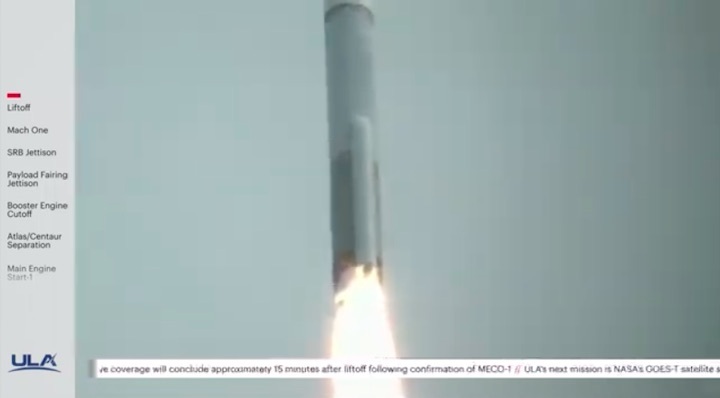
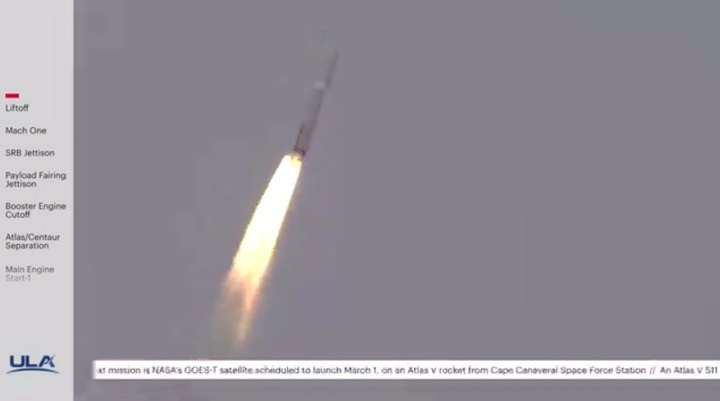
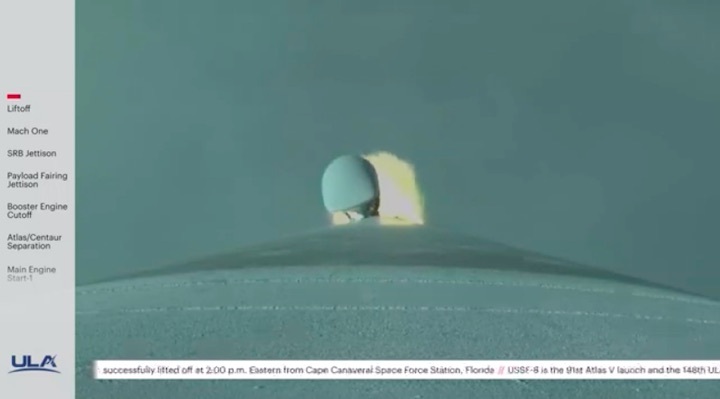
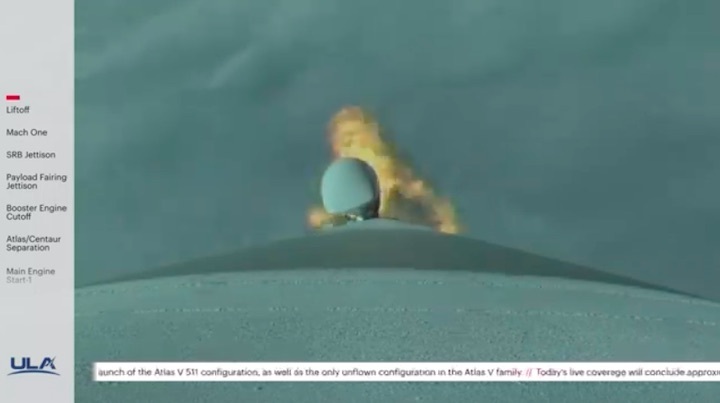
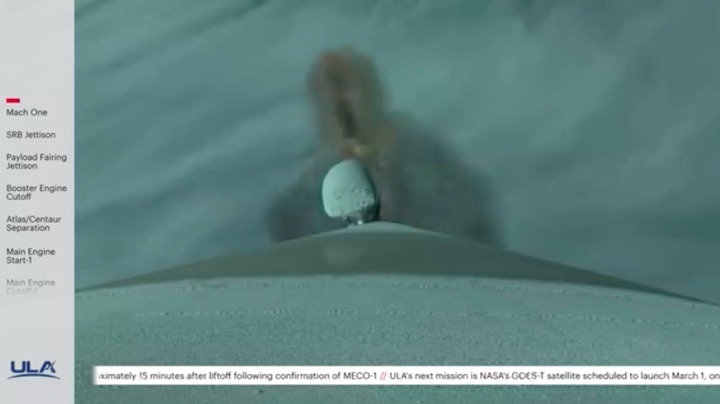

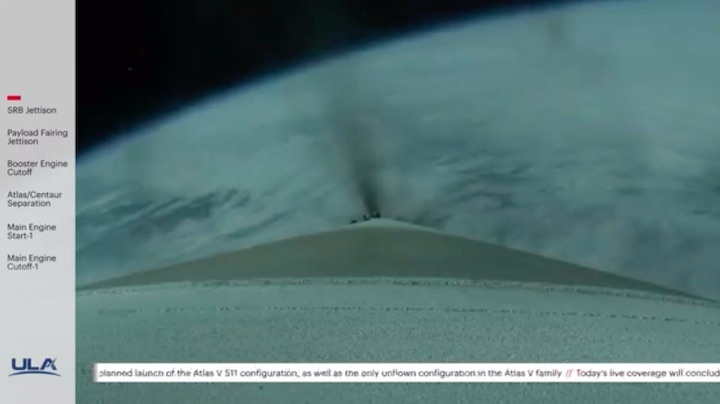


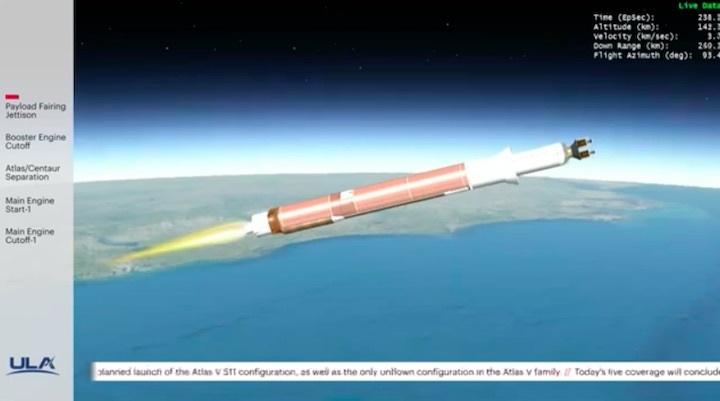
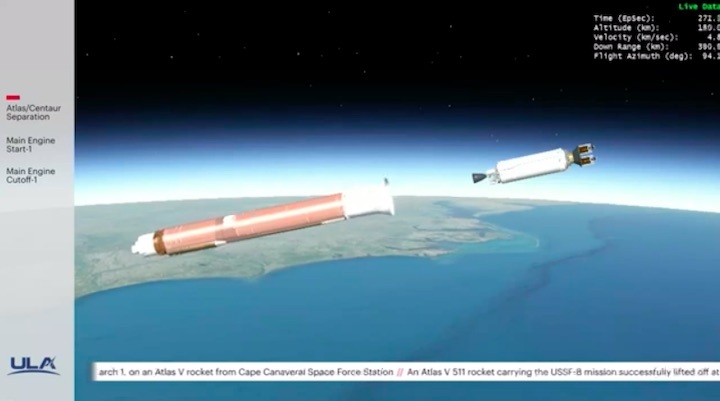
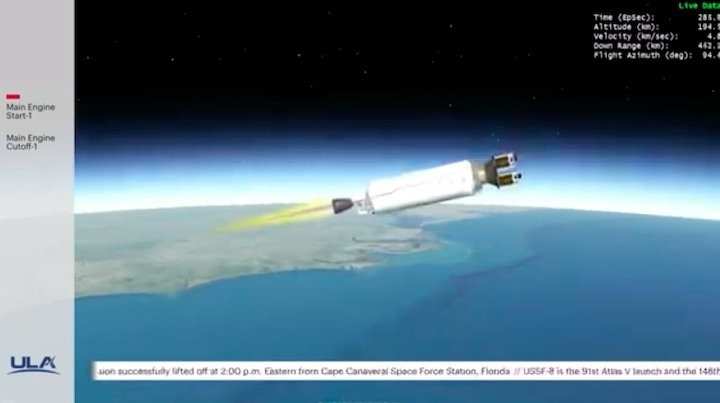
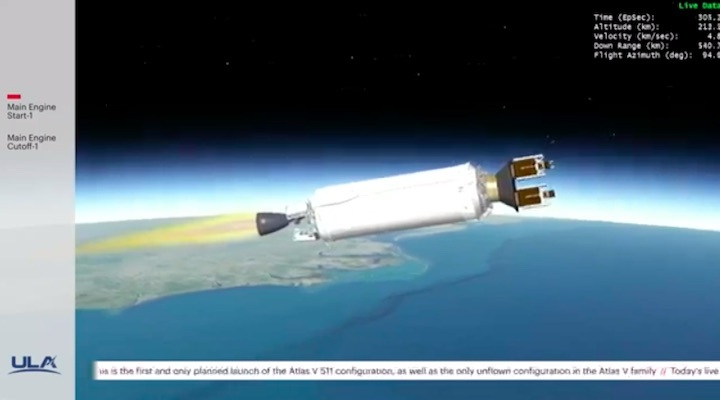
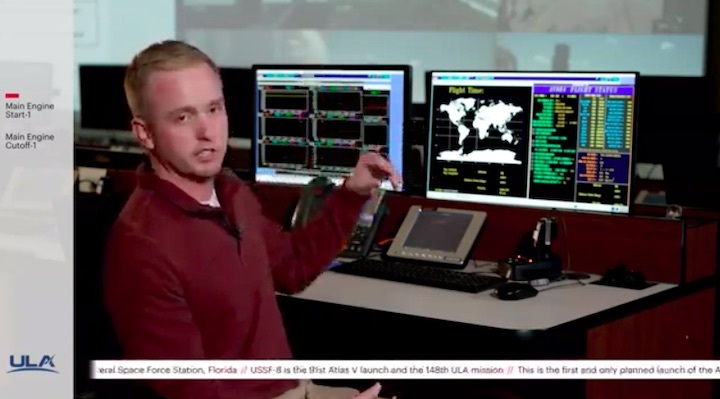
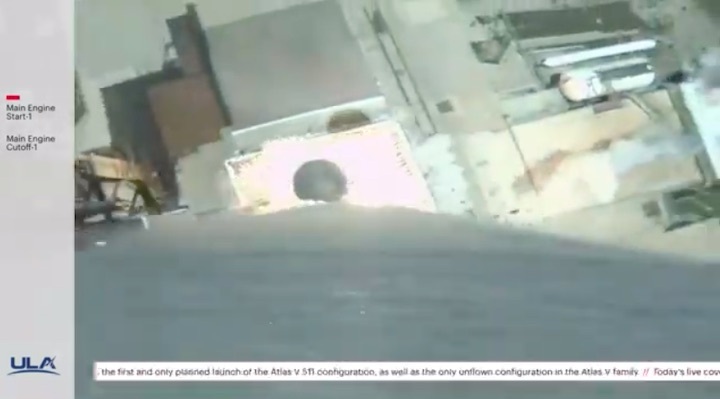
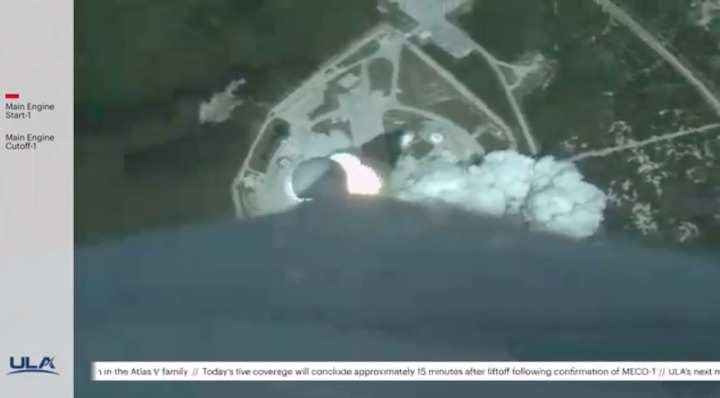
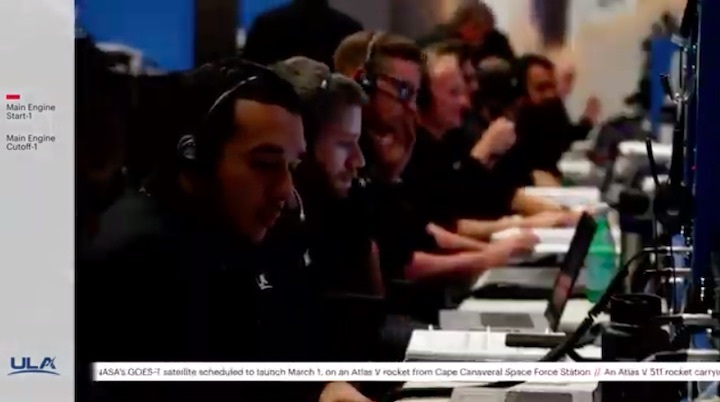
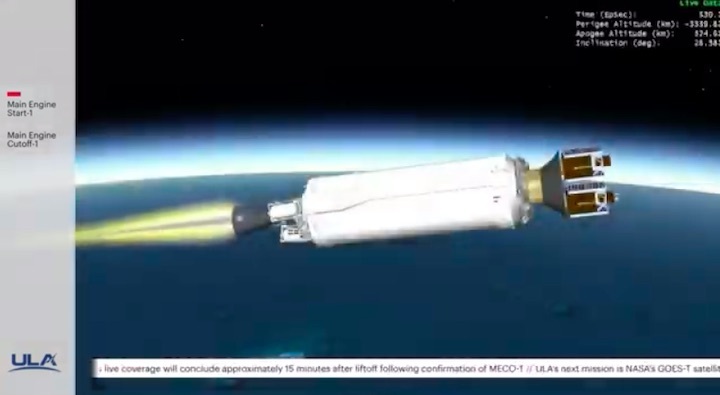
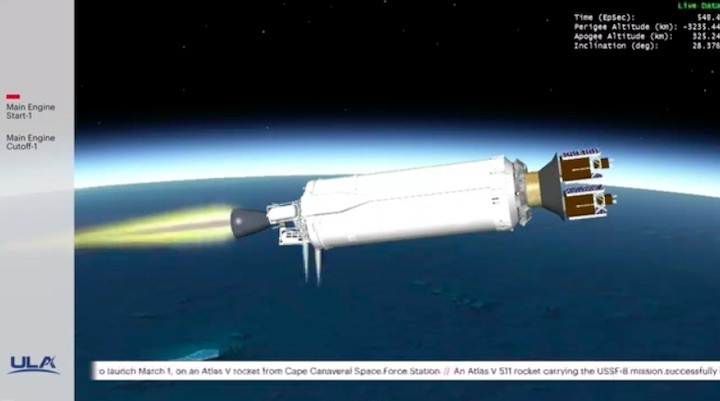
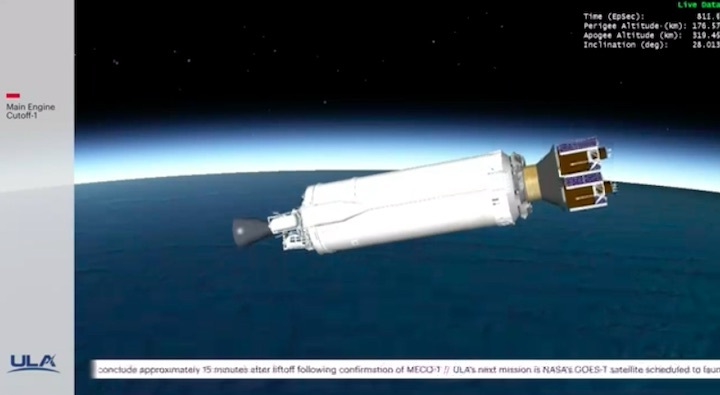
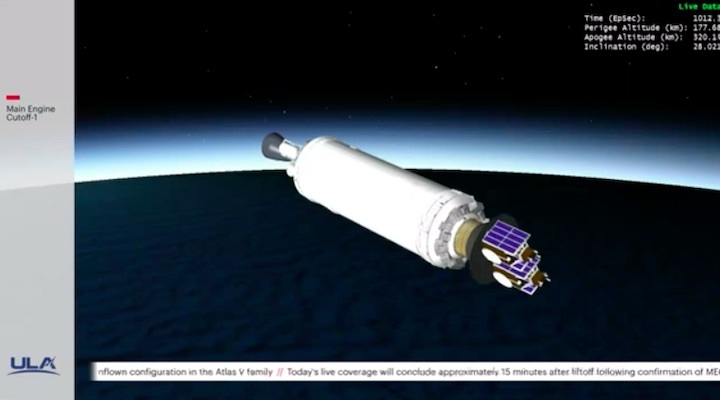
Quelle: ULA

